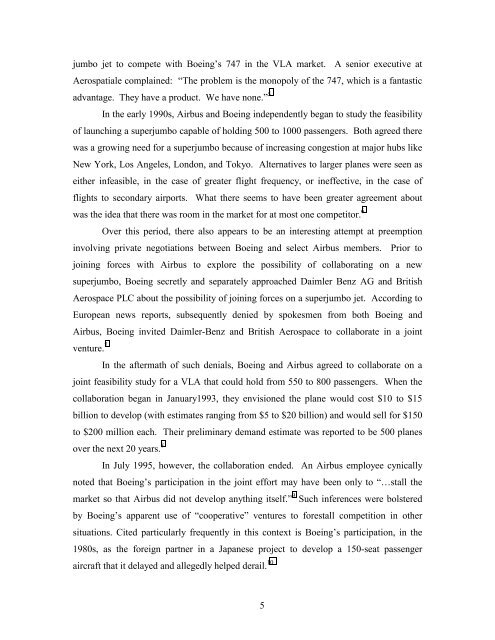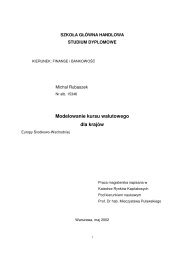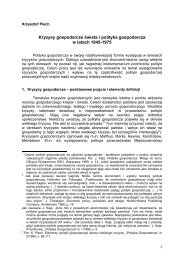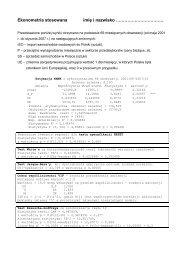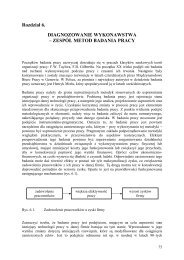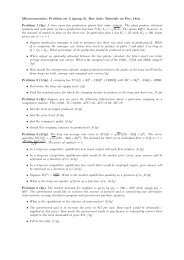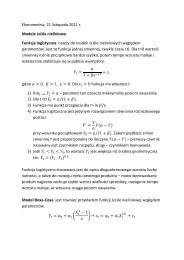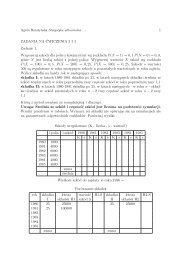“Airbus vs. Boeing in Super Jumbos: A Case of Failed Preemptionâ€Â
“Airbus vs. Boeing in Super Jumbos: A Case of Failed Preemptionâ€Â
“Airbus vs. Boeing in Super Jumbos: A Case of Failed Preemptionâ€Â
Create successful ePaper yourself
Turn your PDF publications into a flip-book with our unique Google optimized e-Paper software.
jumbo jet to compete with <strong>Boe<strong>in</strong>g</strong>’s 747 <strong>in</strong> the VLA market. A senior executive atAerospatiale compla<strong>in</strong>ed: “The problem is the monopoly <strong>of</strong> the 747, which is a fantasticadvantage. They have a product. We have none.” 5In the early 1990s, Airbus and <strong>Boe<strong>in</strong>g</strong> <strong>in</strong>dependently began to study the feasibility<strong>of</strong> launch<strong>in</strong>g a superjumbo capable <strong>of</strong> hold<strong>in</strong>g 500 to 1000 passengers. Both agreed therewas a grow<strong>in</strong>g need for a superjumbo because <strong>of</strong> <strong>in</strong>creas<strong>in</strong>g congestion at major hubs likeNew York, Los Angeles, London, and Tokyo. Alternatives to larger planes were seen aseither <strong>in</strong>feasible, <strong>in</strong> the case <strong>of</strong> greater flight frequency, or <strong>in</strong>effective, <strong>in</strong> the case <strong>of</strong>flights to secondary airports. What there seems to have been greater agreement aboutwas the idea that there was room <strong>in</strong> the market for at most one competitor. 6Over this period, there also appears to be an <strong>in</strong>terest<strong>in</strong>g attempt at preemption<strong>in</strong>volv<strong>in</strong>g private negotiations between <strong>Boe<strong>in</strong>g</strong> and select Airbus members. Prior tojo<strong>in</strong><strong>in</strong>g forces with Airbus to explore the possibility <strong>of</strong> collaborat<strong>in</strong>g on a newsuperjumbo, <strong>Boe<strong>in</strong>g</strong> secretly and separately approached Daimler Benz AG and BritishAerospace PLC about the possibility <strong>of</strong> jo<strong>in</strong><strong>in</strong>g forces on a superjumbo jet. Accord<strong>in</strong>g toEuropean news reports, subsequently denied by spokesmen from both <strong>Boe<strong>in</strong>g</strong> andAirbus, <strong>Boe<strong>in</strong>g</strong> <strong>in</strong>vited Daimler-Benz and British Aerospace to collaborate <strong>in</strong> a jo<strong>in</strong>tventure. 7In the aftermath <strong>of</strong> such denials, <strong>Boe<strong>in</strong>g</strong> and Airbus agreed to collaborate on ajo<strong>in</strong>t feasibility study for a VLA that could hold from 550 to 800 passengers. When thecollaboration began <strong>in</strong> January1993, they envisioned the plane would cost $10 to $15billion to develop (with estimates rang<strong>in</strong>g from $5 to $20 billion) and would sell for $150to $200 million each. Their prelim<strong>in</strong>ary demand estimate was reported to be 500 planesover the next 20 years. 8In July 1995, however, the collaboration ended. An Airbus employee cynicallynoted that <strong>Boe<strong>in</strong>g</strong>’s participation <strong>in</strong> the jo<strong>in</strong>t effort may have been only to “…stall themarket so that Airbus did not develop anyth<strong>in</strong>g itself.” 9 Such <strong>in</strong>ferences were bolsteredby <strong>Boe<strong>in</strong>g</strong>’s apparent use <strong>of</strong> “cooperative” ventures to forestall competition <strong>in</strong> othersituations. Cited particularly frequently <strong>in</strong> this context is <strong>Boe<strong>in</strong>g</strong>’s participation, <strong>in</strong> the1980s, as the foreign partner <strong>in</strong> a Japanese project to develop a 150-seat passengeraircraft that it delayed and allegedly helped derail. 105


